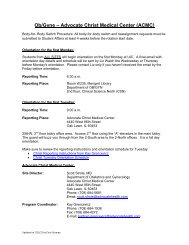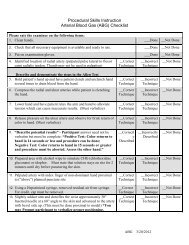a national survey of ASOPRS members. Ophthal Plast Reconstr
a national survey of ASOPRS members. Ophthal Plast Reconstr
a national survey of ASOPRS members. Ophthal Plast Reconstr
You also want an ePaper? Increase the reach of your titles
YUMPU automatically turns print PDFs into web optimized ePapers that Google loves.
<strong>Ophthal</strong> <strong>Plast</strong> <strong>Reconstr</strong> Surg, Vol. 0, No. 0, 2011 <strong>ASOPRS</strong> Ptosis Management Survey<br />
TABLE 4. Dry eye testing preferences<br />
Question Response choice (No.) % <strong>of</strong> total respondents<br />
Do you perform<br />
preoperative<br />
Schirmer<br />
testing?<br />
If you perform<br />
preoperative<br />
Schirmer<br />
testing, in<br />
what patient<br />
population do<br />
you use<br />
Schirmer<br />
testing (check<br />
all that<br />
apply)?<br />
Do you routinely<br />
perform other<br />
measures <strong>of</strong><br />
dry eye on<br />
patients<br />
undergoing<br />
ptosis<br />
surgery?<br />
Surgeons that<br />
perform<br />
Schirmer<br />
testing<br />
preoperatively<br />
Surgeons that do<br />
not perform<br />
Schirmer<br />
testing<br />
preoperatively<br />
Yes<br />
(n 99)<br />
47.6%<br />
History <strong>of</strong><br />
dry eye<br />
(n 40)<br />
22.0%<br />
Fluorescein<br />
testing<br />
(n 63)<br />
64.3%<br />
Fluorescein<br />
testing<br />
(n 66)<br />
60.6%<br />
No (n 109)<br />
52.4%<br />
Symptoms <strong>of</strong><br />
dry eye only<br />
(n 25)<br />
13.7%<br />
Tear lake<br />
measurement<br />
(n 36)<br />
36.7%<br />
Tear lake<br />
measurement<br />
(n 46)<br />
42.2%<br />
physicians that did not perform preoperative Schirmer testing performed<br />
some other form <strong>of</strong> preoperative dry eye testing.<br />
DISCUSSION<br />
Blepharoptosis is a complex problem that is treated in<br />
various ways. Ptosis management is a controversial issue, and<br />
numerous studies on different surgical interventions and their<br />
outcomes have been published over the years. 1–3 We administered<br />
a <strong>national</strong> <strong>survey</strong> in the hopes <strong>of</strong> obtaining information<br />
about current trends in ptosis management. The 37.7% response<br />
rate for this <strong>survey</strong> is similar to a previous <strong>survey</strong> <strong>of</strong><br />
<strong>ASOPRS</strong> <strong>members</strong>, which yielded a 36% response rate. 6 We<br />
divided this <strong>survey</strong> in multiple sections to determine current<br />
preoperative management trends, dry eye screening practices,<br />
and surgical preferences among <strong>ASOPRS</strong> <strong>members</strong>.<br />
Examination <strong>of</strong> the results <strong>of</strong> this <strong>survey</strong> reveals a<br />
number <strong>of</strong> interesting findings. Half (50.5%) <strong>of</strong> <strong>ASOPRS</strong><br />
<strong>members</strong> performed at least 100 ptosis repairs in the past year.<br />
Total<br />
respondents<br />
(No.)<br />
NA NA NA NA NA 208 NA<br />
Signs <strong>of</strong><br />
dry eye<br />
only<br />
(n 27)<br />
14.8%<br />
Tear film<br />
breakup<br />
time<br />
(n 44)<br />
44.4%<br />
Tear film<br />
breakup<br />
time<br />
(n 49)<br />
45.0%<br />
Signs and<br />
symptoms<br />
<strong>of</strong> dry eye<br />
(n 54)<br />
29.7%<br />
Historical<br />
questioning<br />
(n 71)<br />
72.4%<br />
Historical<br />
questioning<br />
(n 77)<br />
70.6%<br />
All patients<br />
(n 46)<br />
25.3%<br />
Other<br />
(n 4)<br />
4.1%<br />
Other<br />
(n 2)<br />
1.8%<br />
Other<br />
(n 2)<br />
1.1%<br />
Do not<br />
perform<br />
(n 76)<br />
41.8%<br />
NA No<br />
(n 12)<br />
12.2%<br />
NA No<br />
(n 18)<br />
16.5%<br />
“Other”<br />
answers<br />
(No. if >1)<br />
182 All patients<br />
except<br />
children; all<br />
patients over<br />
40; for<br />
“moderate” to<br />
“severe” dry<br />
eye patients;<br />
only with<br />
“significant<br />
“history <strong>of</strong><br />
dry eye”; only<br />
in patients<br />
with<br />
“significant”<br />
dry eye<br />
symptoms<br />
98 Rose Bengal;<br />
slit lamp<br />
examination<br />
(n 2)<br />
109 Lissamine green;<br />
slit lamp<br />
examination<br />
(n 2); check<br />
for Bell<br />
phenomenon<br />
(n 2)<br />
NA, not applicable.<br />
The total number in each column may not add to the total number <strong>of</strong> respondents, as respondents were allowed to choose more than one answer for each question.<br />
This indicates the importance <strong>of</strong> ptosis repair and management<br />
in an oculoplastic surgeon’s practice.<br />
Nearly two-thirds <strong>of</strong> <strong>ASOPRS</strong> <strong>members</strong> that responded<br />
to the <strong>survey</strong> utilized a phenylephrine test in their preoperative<br />
testing protocol. This indicates the high level <strong>of</strong> openness to<br />
performing internal levator aponeurosis advancement surgeries.<br />
Interestingly, a vast majority <strong>of</strong> surgeons performing the phenylephrine<br />
test use 2.5% phenylephrine despite the fact that the<br />
original investigators used 10% phenylephrine. 2 This is in line<br />
with later studies showing the utility <strong>of</strong> 2.5% phenylephrine<br />
with reduction in potential side effects. 7 Other findings <strong>of</strong><br />
interest include the extensive use <strong>of</strong> formal preoperative visual<br />
field testing. Specifically, it was surprising to the authors that<br />
the majority <strong>of</strong> respondents used the automated Humphrey<br />
visual field for their preoperative visual fields. This approach<br />
was noted to be more time intensive than kinetic perimetry in<br />
previous studies. 4 In fact, static perimetry may be less sensitive<br />
than kinetic perimetry in finding visual field loss in ptosis<br />
© 2011 The American Society <strong>of</strong> <strong>Ophthal</strong>mic <strong>Plast</strong>ic and <strong>Reconstr</strong>uctive Surgery, Inc. 5


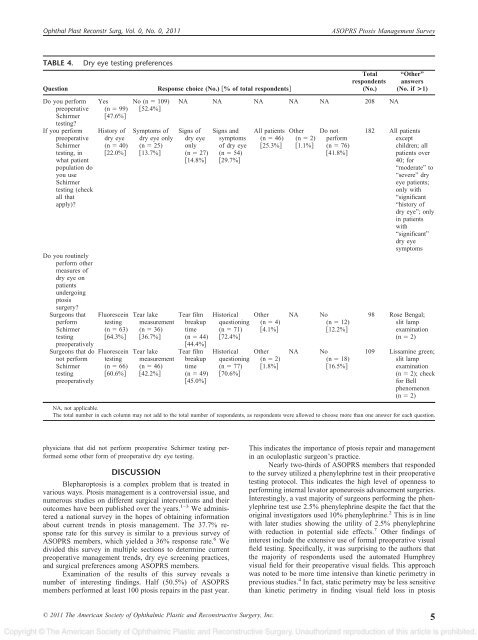
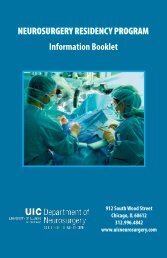
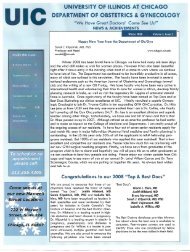
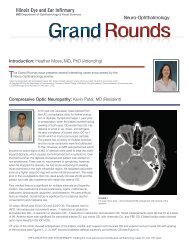
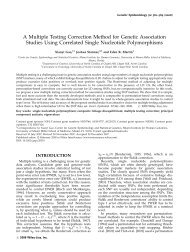
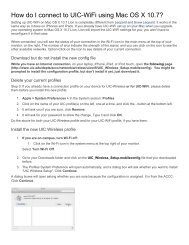
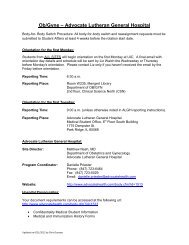
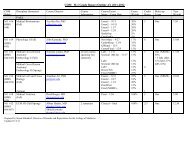

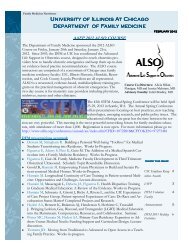
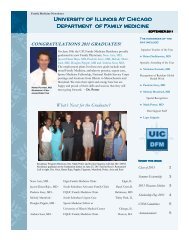
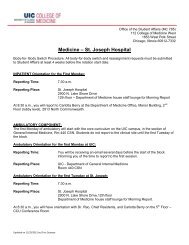
![CV Joan [W51] - University of Illinois College of Medicine at Chicago ...](https://img.yumpu.com/17336863/1/190x245/cv-joan-w51-university-of-illinois-college-of-medicine-at-chicago-.jpg?quality=85)
